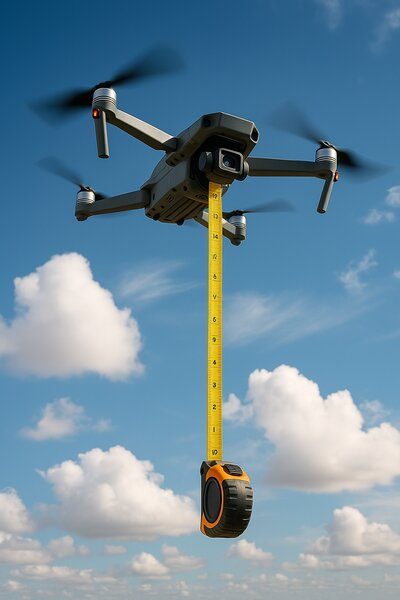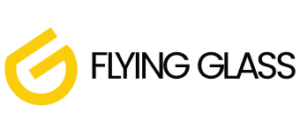How High Can You Fly a Drone in Australia?
If you’re flying a drone recreationally or commercially in Australia, you’ve likely asked: how high can you fly a drone in Australia? Whether you’re capturing stunning aerial cinematography or completing an aerial inspection, understanding height restrictions is essential to operating legally and safely.
Understanding the Drone Legal Height Limit
In Australia, the drone legal height limit is strictly governed by CASA (the Civil Aviation Safety Authority). The general rule is that drones must not fly higher than 120 metres (400 feet) above ground level. This rule applies to both recreational and commercial drone pilots unless special permissions or approvals are obtained.
Flying above this limit without an exemption is illegal and can lead to significant penalties. That said, there are circumstances where going higher may be permitted, such as within controlled airspace under an Operator’s Certificate (OC) with an approved risk assessment and a dedicated flight plan.
How High Can I Fly My Drone in Australia?
The question how high can I fly my drone in Australia comes up frequently, particularly among DJI drone owners. The answer remains the same: without additional permissions, your maximum altitude is 120 metres above ground level.
This applies no matter where you are in Australia – whether it’s coastal New South Wales, a remote part of the Northern Territory, or within proximity to a capital city. However, there are some key location-specific considerations to keep in mind, which we’ll cover later.
What Is the Maximum Height I Can Fly My Drone?
Legally, the maximum height you can fly a drone is capped at 120 metres unless you are authorised to exceed it. For many newer pilots, that might sound restrictive, but remember, even at 100 metres, you can get breathtaking shots and useful survey data. Breaking this rule can result in steep fines or legal action, particularly if you interfere with manned aircraft or fly near controlled airspace.

How High Can I Fly My DJI Drone?
Modern DJI drones come with built-in software restrictions that prevent them from flying above the legal limit in most regions. So if you’re wondering how high can I fly my DJI drone, the answer is that it’s typically capped at 120 metres by default in Australia.
However, some DJI models can technically reach much greater altitudes – up to 500 metres or more – if unlocked. But again, unless you’re flying under an OC and have CASA’s permission, exceeding 120 metres is not allowed.
What Is the Best Height to Fly a Drone?
Aside from legal limits, pilots often wonder what is the best height to fly a drone? The answer depends on what you’re trying to achieve. For cinematic shots or real estate videography, 40–70 metres often offers the ideal perspective. For mapping or agricultural surveying, 100–120 metres allows better coverage and data quality.
When shooting television or film projects – which is our speciality at Flying Glass – we often fly between 20 and 60 metres to capture dynamic, low-angle cinematic movement. This keeps us well within CASA rules and ensures optimal safety.
How High Can I Fly My Drone in My Area?
Asking how high can I fly my drone in my area is smart, as local airspace regulations can differ. Near airports, helipads, or military zones, you are unlikely to be able to fly – or will face additional restrictions and require approval. Apps like CASA’s Can I Fly There? are excellent tools to check your local airspace status before taking off.
Drone Flight Height Accuracy
One commonly overlooked detail is how accurate is drone height information? Drones use barometric pressure, GPS, and internal IMUs to estimate altitude, but these are not foolproof. Barometric altimeters can drift with weather, and GPS signals can lag.
This means your drone might report 120 metres when it’s actually at 115 or 125 metres. As a safety buffer, we recommend staying at or below 115 metres if you’re flying close to the ceiling limit.
Maximum Height Range of a Drone
The maximum height range of a drone depends on the drone itself. Some high-end quadcopters can reach well over 500 metres. However, just because your drone can doesn’t mean it should. The question isn’t really how high drone, but how high is legal and safe in Australian skies.
How High Can a Quadcopter Fly?
If you’re curious how high can a quadcopter fly, the answer can be surprising. Many models, including prosumer-level drones like the DJI Air 3 or Inspire 3, can physically ascend to 500–600 metres or higher. But once again, Australian aviation law takes precedence: 120 metres is the enforceable ceiling without CASA approval.
What Happens If You Fly Over the 400 ft Limit?
You might be wondering how screwed are you if you go over the 400 ft limit? In short – quite. CASA takes breaches seriously. If you’re caught flying over the legal ceiling without approval, penalties can include thousands in fines, loss of licence, and even criminal charges if the breach endangers aircraft or people.
If you need to capture aerial shots beyond 120 metres, Flying Glass can help. We’re licensed and approved to perform high-altitude shoots legally and safely across Australia.
Drone Return-to-Home Height
What height do drones return to home? Return-to-Home (RTH) height is configurable in most drones and should be set high enough to clear buildings and trees, typically between 30 and 100 metres. If you’re operating near taller structures, adjust accordingly to ensure a clear path home without breaching CASA’s maximum limit.
How High Can a Drone Fly at Night?
When it comes to how high can a drone fly at night, the same 120 metre limit applies. However, night flying brings extra complexity. You must maintain visual line of sight (VLOS), which becomes harder in darkness. Night flights are also subject to additional CASA rules, especially for RePL holders operating under an Operator’s Certificate.
How High Can a Drone Fly in Metres?
If you’re Googling how high can a drone fly in metres, you’re likely hoping to convert imperial figures. The legal maximum in Australia is 120 metres, which equates to roughly 400 feet. Drone specs from manufacturers often use feet, so keep that conversion in mind.
And for how high can a drone fly DJI, many DJI drones cap at 500 metres physically, but software restrictions prevent exceeding 120 metres in Australian airspace.
Need to Fly Higher? Let Flying Glass Handle It
If you need drone footage higher than 120 metres – for TV production, tower inspections, or architectural flyovers – let us do the flying. Flying Glass holds a CASA-approved Operator’s Certificate (OC) and can handle the application process for flight permissions, risk assessments, and safe execution.
We also offer drone training courses for those who want to understand the rules and fly commercially. Our training covers everything from legal compliance to safe operations and airspace awareness.
Whether you’re a filmmaker or future pilot, Flying Glass is here to help you stay safe, stay legal, and get the shot – no matter how high you need to go.

